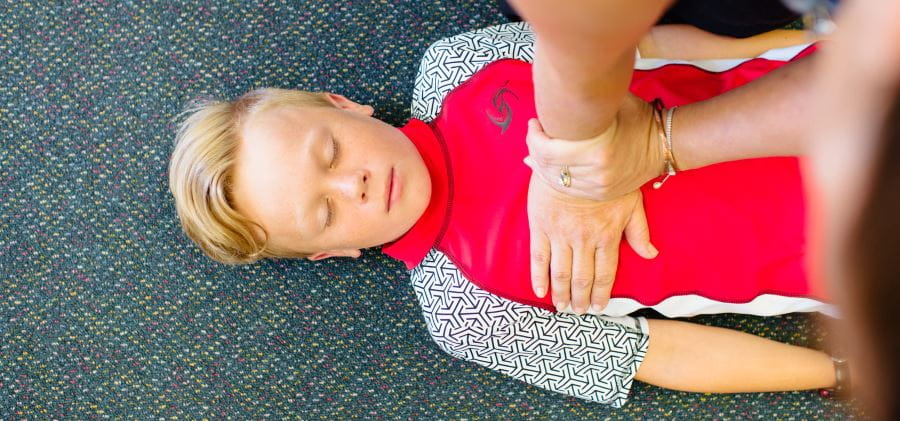
When you're faced with performing resuscitation on a casualty it's vital to ensure you follow the DRSABCD Action Plan!
- D - Danger - Check for danger to self, to bystanders and to the casualty
- R - Response - Ask if they can hear you. Squeeze the casualty’s shoulder
- S - Send for help - Call 000
- A - Airway Check mouth for obstructions, clear on the casualty’s side as required
- B - Breathing - Look, listen and feel for breathing (10 seconds)
- C - CPR - If the person is not breathing, start CPR (30 compressions and then 2 breaths)
- D - Defibrillator - Grab a defibrillator and follow the prompts as soon as possible
Q. What is CPR
Resuscitation or cardiopulmonary resuscitation (CPR) is the technique of chest compressions combined with rescue breathing. The purpose of CPR is to temporarily maintain a circulation sufficient to preserve brain function until emergency services arrive.
Q. Why should I learn resuscitation?
Resuscitation is a skill for life. Early high-quality CPR saves lives. In most cases when an emergency occurs, a family member is the first on the scene. In fact, many children are alive today because their parents knew how to perform CPR and responded quickly. Having the skills to react in an emergency can mean the difference between life and death while you wait for emergency services to arrive.
Q. What are the legal implications of doing CPR?
Lay persons or bystanders acting as a “Good Samaritan” are under no legal obligation to assist a fellow human being. However, you need not fear litigation if you come to the aid of a fellow human in need. The Australian Resuscitation Council and Royal Life Saving encourages people to provide assistance to any person in need. Having decided to assist, a standard of care appropriate to your training is expected. Although legislation varies between the States and Territories, if performing CPR, you are generally expected to act in good faith and without recklessness.
Q. What do I need to say when I call 000?
When you call 000 you should stay on the line, not panic and answer all the questions the operator asks you. A basic understanding of the casualty’s condition, what has happen, what is being done and your location will assist you in answering the emergency services questions.
Q. Where can I learn resuscitation?
Royal Life Saving is one organisation that offers Resuscitation courses to the public. Courses are approximately four hours in duration and your skills should be updated annually. However, you can also do a first aid course, which provides you with a range of skills for emergency situations.

Real Life Story
When 15-year-old Stanley McFarlane saw a woman lying motionless on the ground near his school, Christ Church Grammar, he immediately went to her aid. Having trained in CPR through school, Stanley was able to administer around 20 compressions of CPR while instructing his father to call for an ambulance.
After the 20 compressions, the woman took a gasp of air. Over the phone, the emergency services instructed Stanley to continue giving compressions, which brought her round to a conscious state. Stanley then put her in the recovery position and reassured her before she was taken away by ambulance.
“It was the fact that Royal Life Saving WA provided this course at Christ Church Grammar School that meant that Stanley was equipped to save this woman’s life,” Stanley’s mum Janelle says. “He was so calm and well prepared, and made me extremely proud.” For his brave actions Stanley received a Royal Life Saving Gold Medallion Bravery Award.
If you know someone like Stanley nominate them for a Bravery Award at the link below.
